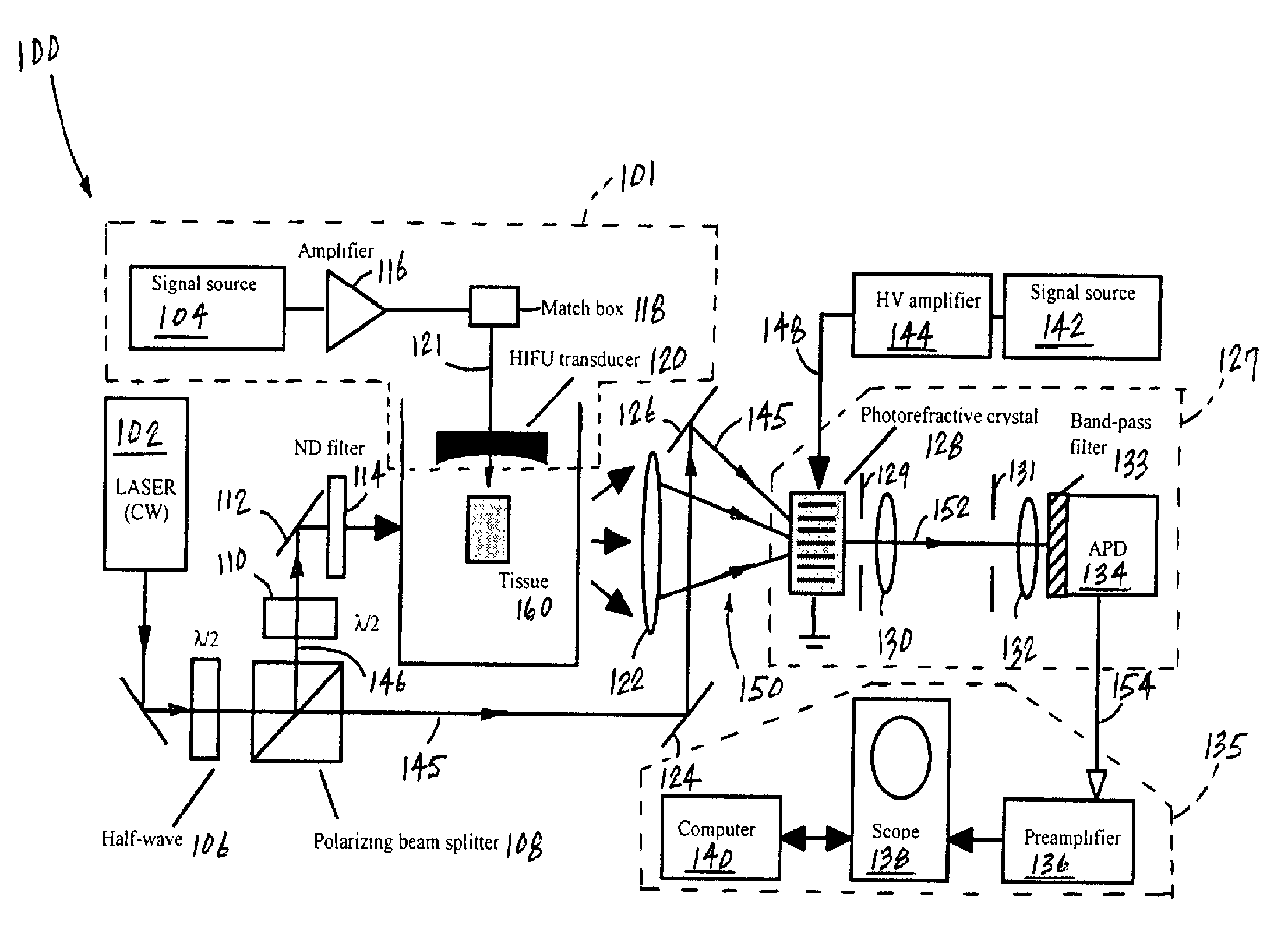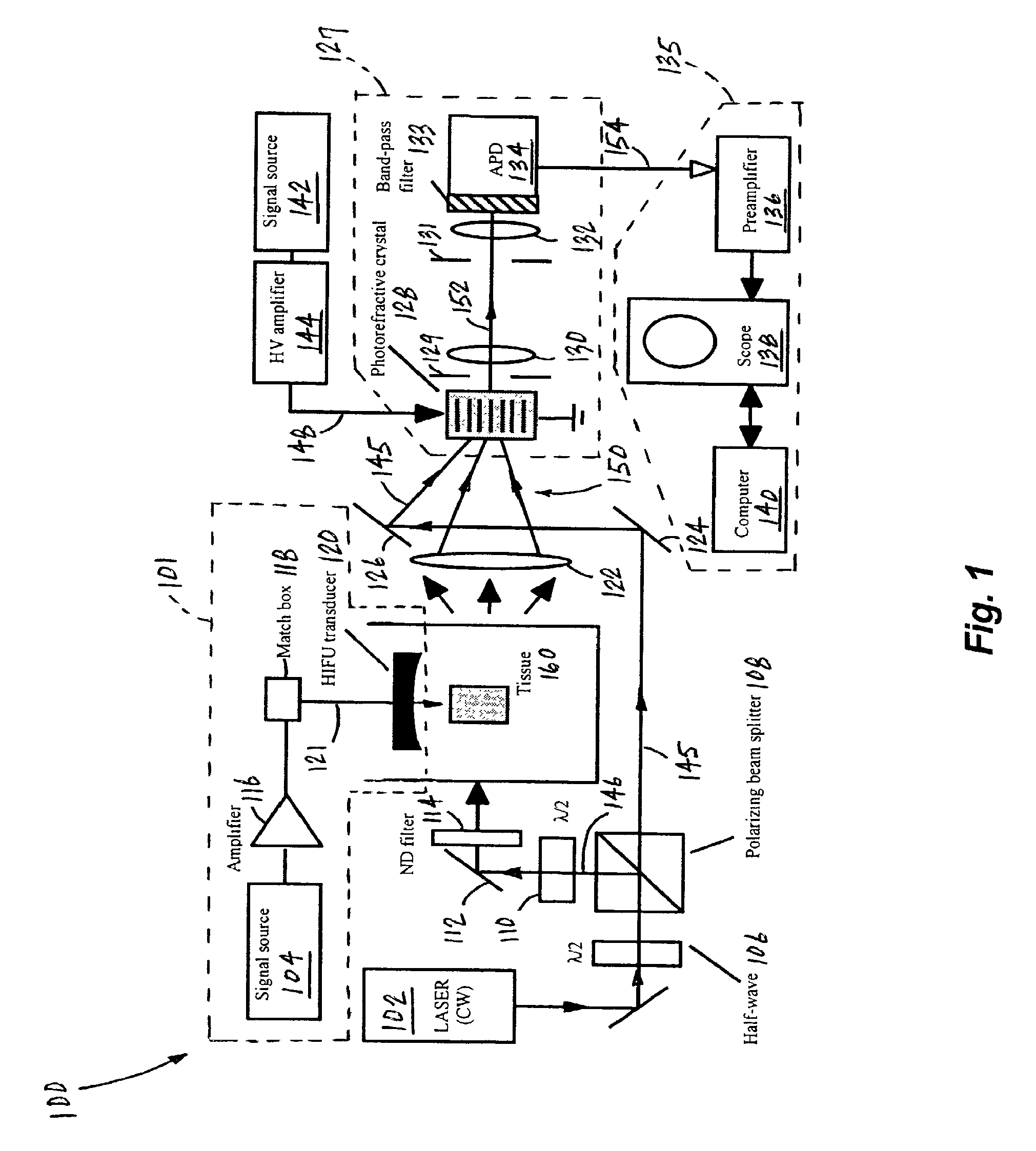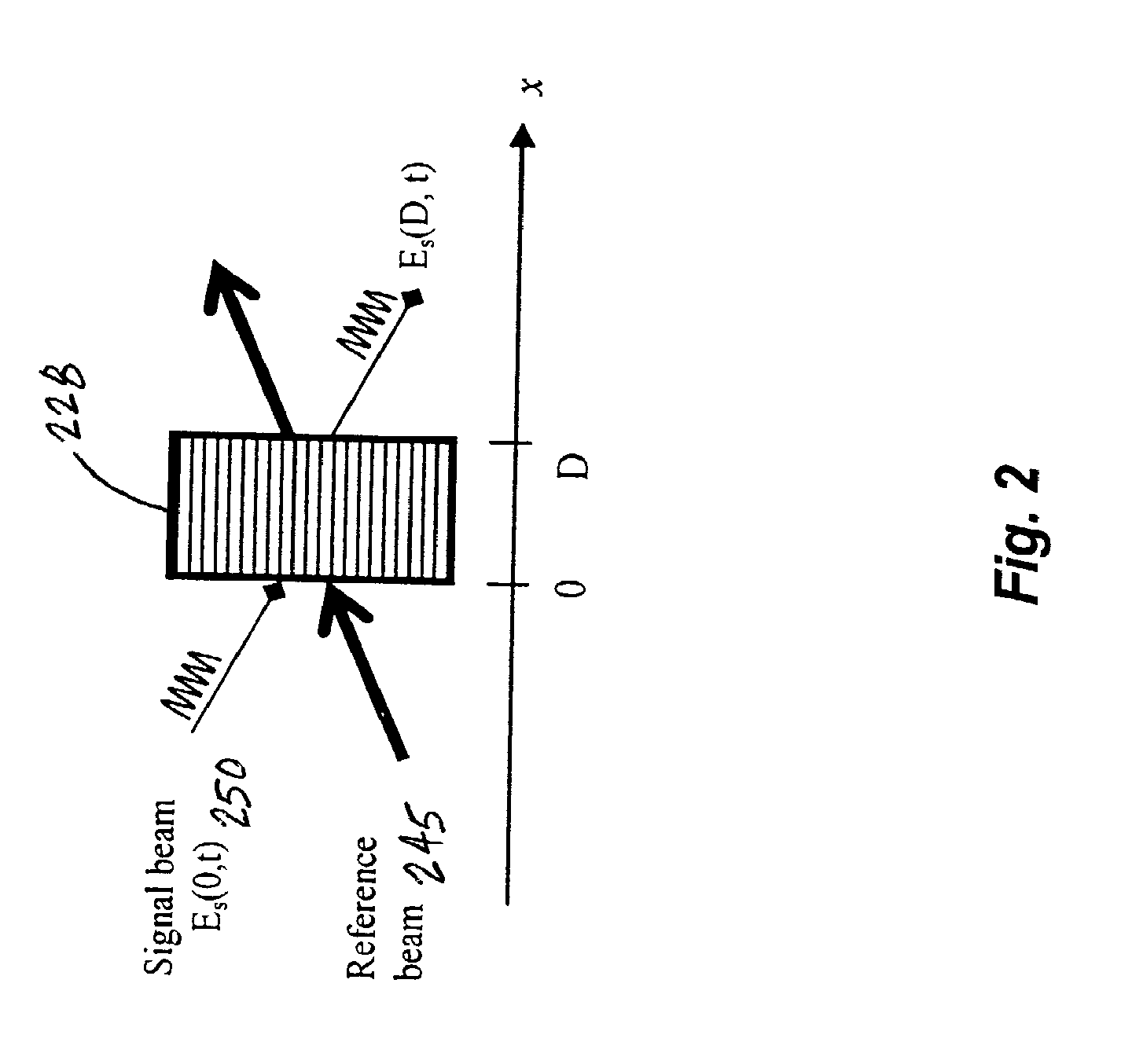Enhanced detection of acousto-photonic emissions in optically turbid media using a photo-refractive crystal-based detection system
a detection system and photo-refractive technology, applied in the field of optical tomography, can solve the problems of difficult to achieve good spatial resolution using optical imaging techniques in biomedical imaging, the use of optical imaging has drawbacks, and the laser light typically used in optical imaging techniques generally undergoes a high degree of scattering within turbid media. achieve the effect of increasing the detection sensitivity
- Summary
- Abstract
- Description
- Claims
- Application Information
AI Technical Summary
Benefits of technology
Problems solved by technology
Method used
Image
Examples
Embodiment Construction
[0025]U.S. Provisional Patent Application No. 60 / 537,792 filed Jan. 20, 2004 entitled ENHANCED DETECTION OF ACOUSTO-PHOTONIC EMISSIONS IN OPTICALLY TURBID MEDIA USING A PHOTO-REFRACTIVE CRYSTAL-BASED DETECTION SYSTEM is incorporated herein by reference.
[0026]A system and method of detecting acousto-photonic emissions in optically turbid media is disclosed that provides increased levels of detection sensitivity. The presently disclosed detection system is based on a photo-refractive crystal (PRC), which receives a reference light beam and a signal light beam corresponding to the acousto-photonic emission. The photo-refractive crystal implements a two-wave mixing process for converting optical phase modulation encoded on the signal beam to intensity (i.e., amplitude) modulation. The intensity of the signal beam has an AC component, and a DC offset having an amplitude that is a function of the modulated photon density and thus the attenuation coefficient of the turbid medium in the lig...
PUM
| Property | Measurement | Unit |
|---|---|---|
| pulse repetition frequency | aaaaa | aaaaa |
| focal distance | aaaaa | aaaaa |
| angle | aaaaa | aaaaa |
Abstract
Description
Claims
Application Information
 Login to View More
Login to View More - R&D
- Intellectual Property
- Life Sciences
- Materials
- Tech Scout
- Unparalleled Data Quality
- Higher Quality Content
- 60% Fewer Hallucinations
Browse by: Latest US Patents, China's latest patents, Technical Efficacy Thesaurus, Application Domain, Technology Topic, Popular Technical Reports.
© 2025 PatSnap. All rights reserved.Legal|Privacy policy|Modern Slavery Act Transparency Statement|Sitemap|About US| Contact US: help@patsnap.com



